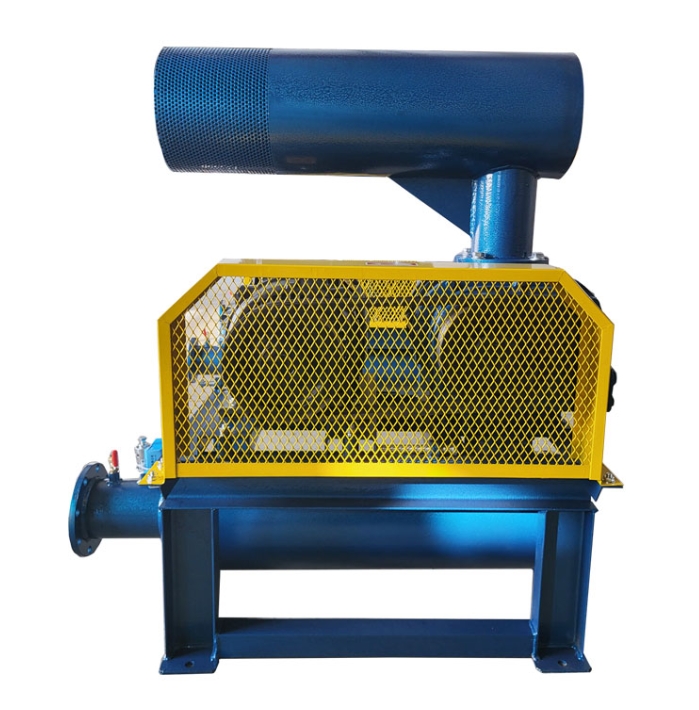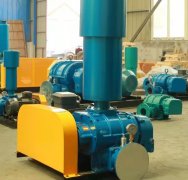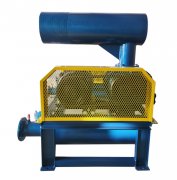**Comparison of vertical and horizontal selection of Roots blower**
Roots blowers are mainly divided into two types based on their structural form: vertical (vertical installation) and horizontal (horizontal installation). The selection of Roots blowers depends on specific application scenarios, space limitations, maintenance convenience, and other factors. The following is a comparative analysis of the two and common application suggestions:
---

**1. Comparison of structural characteristics**
|* * Features * * | * * Vertical Roots blower * * | * * Horizontal Roots blower * *|
|-------------------|-------------------------------------|-------------------------------------|
|* * Installation method * * | Vertical installation (motor on top or bottom) | Horizontal installation (motor parallel to fan)|
|* * Floor Area * * | Small, Suitable for Space Constrained Environments | Large, Requires Horizontal Space Reservation|
|* * Maintenance Convenience * * | Difficult to repair (requires disassembly of upper components) | Easy to maintain (gearbox and bearing are easily accessible)|
|* * Vibration control * * | High center of gravity, need to strengthen foundation stability | Low center of gravity, relatively small vibration|
|* * Applicable pressure range * * | Medium and low pressure (≤ 0.8 bar) | Medium and high pressure (expandable to 1.5 bar or above)|
|Sealing requirements * * | The shaft seal needs to be designed to prevent oil leakage (lubricating oil is prone to infiltration) | The sealing structure is simple and the maintenance cost is low|
---
**2. Comparison of application scenarios**
**(1) Typical uses of vertical Roots blower**
-* * Space limited occasions * *: such as ships, mobile devices, and small sewage treatment plants.
-Vertical pipeline connection: When the process pipeline needs to be arranged vertically (such as aeration in high-rise buildings).
-Special medium transportation: When transporting liquid containing gases, it can reduce liquid retention (such as in biogas desulfurization conditions).
**(2) Typical uses of horizontal Roots blower**
-Industrial general scenarios: such as cement plants, chemical plants, and sewage treatment plants (selected for projects above 80).
-* * High flow demand * *: Horizontal structure makes it easier to achieve large machine numbers (such as 125-300 models).
-High pressure working condition: The gears and bearings have stronger load-bearing capacity and are suitable for long-term high-pressure operation.
---
**3. Market Usage Analysis**
-Horizontal is more mainstream
-Accounting for about 70-80, it is suitable for most industrial scenarios due to its easy maintenance and high stability.
-The standardized products of typical brands (such as Changsheng, Zhangqiu Changsheng Machinery Manufacturing Co., Ltd.) are mainly horizontal.
-Vertical has specific requirements:
-Accounting for about 20-30, mainly used for special spaces or vertical pipeline conditions.
-Commonly found in ships and compact integrated equipment (such as MBR membrane bioreactors).
---
**4. Selection suggestions**
-* * Priority should be given to horizontal * *:
-Unless required by space or pipeline layout, horizontal layout is a more reliable choice (with lower maintenance costs and lower failure rates).
-In the case of choosing a vertical position:
-Installation height is limited (such as in basements or containers).
-Process pipelines must be arranged vertically to reduce elbow resistance.
---
**5. Precautions**
-Lubrication problem of vertical fan: Leak proof bearings should be used for sealing to prevent lubricating oil from seeping down.
-Vibration Control of Horizontal Fans: Large scale fans require the installation of vibration reduction foundations.
-* * Maintenance cost * *: When replacing gears or bearings in a vertical fan, it is usually necessary to lift it as a whole, which takes a long time.
---
**Summary**
-Horizontal Roots blower is more commonly used and suitable for most industrial scenarios, with convenient maintenance and high stability.
-Vertical Roots blower is suitable for special spaces or vertical pipeline requirements, but the maintenance cost is relatively high.
-* * Key selection criteria * *: Space limitations, pipeline layout, pressure requirements, and maintenance convenience.
It is recommended to clarify the installation conditions with the supplier during selection, and provide on-site layout drawings if necessary to optimize the design.



